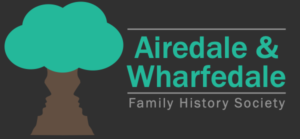Zoom talk by Dave Joy Thursday 4 March 2021
Notes by Susanne Young
A rare treat featuring a fascinating account of social history delivered by a most entertaining speaker.
The early C19th Industrial Revolution led to a massive removal of people from the countryside into Britain’s towns and cities. Amongst these were a number of farming families who relocated from Yorkshire to Liverpool. This was in response to prevailing economic circumstances as milk producers found their market for fresh milk shifted from rural to urban areas. Mid C19th introduction of the rail network provided some solution to the problems of transporting milk from the countryside to towns and cities. Despite this city cow keepers prospered as milk did not travel well by train and by providing fresh milk locally these businesses were also able to cut out the ‘middle man’.
Cows were kept in back yards behind terraced housing which became known as City Milk Houses. Short horn cattle were initially the preferred breed as good milkers combined with their suitability to be sold as fatstock. The turnover of city cows was fairly rapid, optimising the herd for milk production, hence the term ‘flying herd’. Muck was stored in a midden pending removal. The whole family were usually employed in the business, keeping and milking the herd, delivering milk and running a shop for the sale of milk on the premises.
Milk was delivered by horse and cart in metal churns – referred to as ‘kitting out the milk’ – and dispensed into housewives’ jugs along route. In the absence of suitable grazing pasture, cows were fed a diet of bran, grain, molasses, oil seed cake and hay purchased from farmers who brought their hay to an area still known today as Haymarket in Liverpool (alternatively manure muck was exchanged for hay). Over all these milk houses became most profitable businesses.
The Liverpool & District Cow Keepers Association was formed in 1865 providing insurance and an active social calendar amongst members which in turn led to many inter-marriages amongst cow keeping families. By 1900 there were some 500 registered cow keepers in Liverpool. Fresh cattle regularly arrived by train into Lime Street Station on what became known as ‘Cow Fridays’. ‘Railway milk’ was also transported into the city by corporate dairies who sold milk in shops. Fierce competition arose between providers of ‘railway milk’ and the city’s cow keepers, the latter making much of their high standards as business operations were inspected by the City Corporation and the doorstep freshness of their milk. The cow keepers took part in the annual Liverpool Cattle Show and advertised their prize winning to customers.
WW2 saw the loss of many cow keeping businesses in Liverpool due to bombing raids and business generally declined due to improved transportation of milk from rural areas by road. Some cow keepers became suburban milkmen and some families migrated back to their Yorkshire roots. Liverpool’s last cow keeper left the city in 1975.
Dave Joy’s personal interest in the Liverpool Cow Keepers arose from his own family history. His ancestors migrated from Hebden to Liverpool mid C19th. The family’s successful cow keeping business passed down through the generations to Dave’s own father and his early childhood recollections of the Wellington Dairy in Garston feature in his book ‘My Family & other Scousers’. This publication led to his subsequent book ‘Liverpool Cow Keepers’ and both books are available on his website www.davejoy-author.com which features other families who undertook similar migrations. The Joy family milk business stopped cow keeping in 1955 and was eventually sold to a suburban milkman.
Lynda Balmforth gave a vote of thanks at the end.
